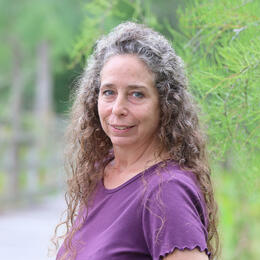In early June, birders and photographers from around the nation flocked to two locations in Florida for the chance to see or photograph rare birds, including two Large-billed Terns reported in Brevard and Collier counties. Typically found in South America, a Large-billed Tern in Florida is considered a Code 5 rare bird by the American Birding Association and an extremely thrilling addition to any birder’s “life list.”
While many of us enjoy seeing rarities and getting glimpses into their secret lives, we need to consider the risks involved in taking wildlife photos. Unfortunately, birders and photographers enthused about the special tern are also spooking nearby breeding birds, including Black-necked Stilts.
Approaching birds too closely or staying too long near breeding birds disrupts their natural behavior and can leave chicks and eggs vulnerable to the elements and without food and care. Having the right gear can keep birds safe. Binoculars are lightweight and convenient for seeing birds when on the move, while a spotting scope is a high-powered, tripod-mounted telescope. Scopes are becoming more compact and less expensive and provide the best views of birds in their habitat. Accessories now enable the use of a cell phone camera for capturing imagery through binoculars or a scope.
For photographers, a long lens may be cumbersome but is crucial for getting great shots of birds doing what comes naturally. Professionals often use a 600 mm lens or longer. Regardless of lens length, it is important to shoot in the highest resolution possible—the images may take up a few extra megabytes, but that extra data comes in handy for cropping out background scenery for a zoomed-in shot.
Why is this so important?
Causing birds to flush, or take flight, forces them to expend valuable energy that they might need for migration or breeding. Altering their behavior is especially problematic during nesting season, which, in Florida, occurs in spring and summer. An adult bird flying off its nest to evade an intruder directly threatens the safety of its eggs or babies. Without the adult to provide shelter, eggs and chicks will overheat in the Florida sun, or become easy targets for predators.
Another tip? Be alert to any wildlife in the area and especially pay attention to bird behavior and posture. Calling repeatedly (like the stilts have been doing) or dive-bombing are some obvious clues that birds are distressed.
“I always look for birds that are standing on one leg, preening, or taking a nap,” says wildlife photographer R J Wiley. “If my subject looks concerned or agitated, I step back,” he added.
Many photographers just don’t realize the unintended impacts they might cause while photographing wildlife. There are many ways to minimize those impacts—check out Audubon’s guide to ethical bird photography. Audubon encourages photographers to be role models for others by demonstrating these practices.




